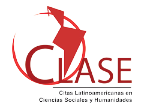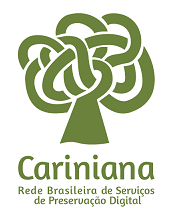Information system model to generate feedback in teaching based on activity theory
DOI:
https://doi.org/10.5433/1981-8920.2018v23n1p271Keywords:
Information systems, Feedback, Teaching, Activity Theory, Multimodality, OntologiesAbstract
Introduction: Feedback is information about a person's performance on a particular task. The lack of this item in the classroom can bring several damages to the quality of teaching. Objective: The study seeks to analyze the student's perception to generate relevant information to the teacher as feedback. Methodology: For this, we propose an innovative modeling with aspects of activity theory, multimodality and ontology use. Results: as a result, we intend to create ontology of classrooms that determine the activities of the teacher that can be aided with the students' perception in education. Conclusions: the possibility of applying their results for help and training the teachers, providing a way for the use of information in addressing the challenges of the classroom and qualification of teaching.Downloads
References
CORCHO, O; GOMEZ-PEREZ, A. A roadmap to ontology specification languages. In: INTERNATIONAL CONFERENCE ON KNOWLEDGE ENGINEERING AND KNOWLEDGE MANAGEMENT METHODS, MODELS AND TOOLS, 12., 2000, France. Anais…Proceedings. France, 2000. p. 80-97.
DALE, E. Audiovisual methods in teaching. New York: Dryden Press, 1969.
DEAN, M.; CONNOLLY, D.; HARMELEN, F.; HENDLER, J.; HORROCKS, MCGUINESS, D. L.; PATEL-SCHNEIDER, P. F.; STEIN, L. A. A. Web ontology language (OWL) reference version 1.0. W3C Working Draft, nov.2002. Disponível em: http://www.w3.org/TR/2002/WD-owl- ref-20021112/. Acesso em 19 maio 2015.
DIAS, M. L. A esfera multimodal: o uso de power point como ferramenta de expressão e integração em um ambiente educacional. 2011. Tese (Doutorado em Letras) – Pontifícia Universidade Católica do Rio de Janeiro, Rio de Janeiro, 2011.
ENGESTRÖM, Y. Learning by expanding: an activity-theoretical approach to development research. Helsinki, Finland: Orienta-Konsultit, 1987. Disponível em: http://lchc.ucsd.edu/MCA/Paper/Engestrom/expanding/toc.htm. Acesso em: 18. maio. 2015.
FEITOSA, A. A integração entre sistemas legislativos, terminologia e web semântica na organização e representação da informação legislativa. 2005. Tese (Doutorado em Ciência da Informação) – Universidade de Brasília, Brasília, 2005.
FRAGOULIS, I.; DIAMANTAKI, E. The Importance of Feedback in Relation to Doing Practical Teaching Exercises. Opinions Postgraduate Student School of Pedagogical and Technological Education Heraklio of Crete. IES, v. 5, n. 6, 2012. Disponível em: http://www.ccsenet.org/journal/index.php/ies/article/view/20858. Acesso em 21 maio. 2015.
GRUBER, T. What is an Ontology? Disponível em: http://wwwksl.stanford.edu/kst/what-is-an-ontology.html 1996. Acesso em: maio de 2015.
GUARINO, N; GIARETTA, P. Ontologies and knowledge bases: Towards a terminological clarification. In: N. Mars (ed.) Towards Very Large Knowledge Bases, Knowledge Building and Knowledge Sharing. Amsterdam: IOS Press, 1995.
GUARINO, N.; OBERLE, D.; STAAB, S. What is an Ontology? S. Staab; R. Studer (ed.), Handbook on Ontologies, Second Edition. International handbooks on information systems. Berlin: Springer Verlag, 2009. p. 1-17.
KRESS, G. Literacy in the new media age. London: Routledge, 2003.
KRESS, G.; VAN LEEUWEN, T. Reading images: the grammar of visual design. New York: Routledge, 1996.
KRESS, G.; VAN LEEUWEN, T. Multimodal Discourse: the modes and media of contemporary communication. London: Arnold, 2001.
KUUTTI, K. Activity Theory as a potential framework for human-computer interaction research. In: B. Nardi, (ed.), Context and consciouness: Activity theory and human-computer interaction. Cambridge, MA: MIT Press, 1996. p. 17-44.
LE COADIC, YF. A Ciência da Informação. Brasília: Briquet de Lemos, 2004.
Leont'ev, A. N. Activity, consciousness, and personality (M. J. Hall, Trans.). Englewood Cliffs, NJ: Prentice Hall, 1978. Disponível em: www.marxists.org/archive/leontev/works/1978/index.htm. Acesso em: 18 mai 2015.
LERNER, R. Concepts and theories of human development. Mahwah, N.J.: L. Erlbaum, 2002.
LIZZIO, A.; WILSON, K. Feedback on assessment: students’ perceptions of quality and effectiveness. Assessment & Evaluation in Higher Education, v. 33, n. 3, p. 263-275, 2008.
MACHIN, D. Introduction to Multimodal Analysis. London: Hodder Arnold, 2007.
NICOL, D.; MACFARLANE-DICK, D. Formative assessment and self‐regulated learning: a model and seven principles of good feedback practice. Studies in Higher Education, v. 31, n. 2, p. 199-218, 2006.
NORRIS, S. Analyzing multimodal interaction: a methodological framework. London & New York: Routledge, 2004.
NOY, F. N.; MCGUINNESS, D. L. Ontology development 101: a guide to create your first ontology, 2001. Disponível em: http://ksl.stanford.edu/people/dlm/papers/ontology-tutorial-noymcguinness.doc. Acesso em: 19 maio 2015.
ORSMOND, P.; MAW, S. J.; PARK, J. R.; GOMEZ, S.; CROOK, A. C. Moving feedback forward: theory to practice. Assessment & Evaluation in Higher Education, v. 38, n. 2, p. 240-252, 2013.
PAIVA, V. L. M. O. Feedback em Ambiente Virtual. In: LEFFA, V. (org.) Interação na aprendizagem das línguas. Pelotas: EDUCAT, 2003. Disponível em: http://www.veramenezes.com/feedback.htm. Acesso em: 21 maio 2015.
PASTORE, R. Principles of Teaching. Bloomsburg, PA: Bloomsburg University, 2003. Disponível em: http://teacherworld.com/potdale.html. Acesso em: 19 maio 2015.
RINVOLUCRI, M. Key concepts in ELT. ELT Journal, v. 48, n. 3, p. 287-288, 1994.
ROBINSON, S.; POPE, D.; HOLYOAK, L. Can we meet their expectations? Experiences and perceptions of feedback in first year undergraduate students. Assessment & Evaluation in Higher Education, v. 38, n. 3, p. 260-272, 2013.
ROYCE, T. Multimodality in the TESOL classroom: exploring visual-verbal synergy. TESOL Quarterly, v. 36, n. 2, p. 191-205, 2002.
SANTOS, G. L. Uma Pesquisa Longitudinal sobre Professores e Computadores. Educação & Realidade, Porto Alegre, v. 36, n. 3, p. 837-848, set./dez. 2011. Disponível em: http://www.ufrgs.br/edu_realidade. Acesso em: 21 maio 2015.
SMITH, M, K.; WELTY, C.; MCGUINNESS, D, L. OWL Web Ontology Language Guide. Disponível em: http://www.w3.org/TR/owl-guide/. Acesso em: 19 maio 2015.
TANG, J.; HARRISON, C. Investigating university tutor perceptions of assessment feedback: three types of tutor beliefs. Assessment & Evaluation in Higher Education, v. 36, n. 5, p. 583-604, 2011.
TOLMAN, C. W. Society versus context in individual development: Does theory make a difference? In: ENGESTRÖM,Y; MIETTINEN, R.; PUNAMÄKI. R. L. (ed.), Perspectives on activity theory. Cambridge, UK: Cambridge University Press, 1999.
UR, P. A course in language teaching. Tradução nossa. Cambridge [England]: Cambridge University Press, 1996.
VIEIRA, S. A. O livro r da Metafisica de Aristóteles: ontologia*- a ciência do Ser enquanto Ser. Principios, Natal, v. 2, n. 3, jul./dez. 1995. Disponível em: http://periodicos.ufrn.br/principios/article/view/757. Acesso em: 18 maio. 2015.
VYGOTSKY, L. S. Mind in society: The development of higher psychological processes. Cambridge, MA: Harvard University Press, 1978.
WILLIAMS, R. Tell me how I'm doing. New York: AMACOM, American Management Association, 2005.
WILSON, T. D. Activity theory and information seeking. Annual Review of Information Science and Technology, v. 42, n. 1, p. 119-161, 2008.
Downloads
Published
How to Cite
Issue
Section
License
A revista se reserva o direito de efetuar, nos originais, alterações de ordem normativa, ortográfica e gramatical, com vistas a manter o padrão culto da língua e a credibilidade do veículo. Respeitará, no entanto, o estilo de escrever dos autores. Alterações, correções ou sugestões de ordem conceitual serão encaminhadas aos autores, quando necessário.
O conteúdo dos textos e a citação e uso de imagens submetidas são de inteira responsabilidade dos autores.
Em todas as citações posteriores, deverá ser consignada a fonte original de publicação, no caso a Informação & Informação.
















